Business Efficiency
- Home
- Business Efficiency
BUSINESS EFFICIENCY

_____________
BUSINESS EFFICIENCY BASED OPERATIONAL EXCELLENCE
Achieving Operational Efficiency in Healthcare Industry

Health care professionals assess a patient’s state of wellbeing and devise short-term tactics and long-term strategy for excellence in managing he patient’s care. Likewise, a healthcare organisation needs to assess its own organisational well-being and create and implement plans for excellence. This means not only excellence in providing quality health care, but also in delivering to meet the organisation’s targets for productivity, costs and other key performance indicators. An operational excellence strategy provides the framework for these organisational efforts.
Operational Efficiency Strategy
UnitedHealthcare has to continuously increase value delivered to customers, driving growth in people served across its businesses, and resulting in an 8% to 10% long-term revenue growth rate. The operating margin profile of each business is expected to continue generally stable over the long-term.
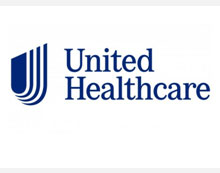
Both health care professionals and administrators can benefit from the use of an operational excellence strategy to fix these and other problems. Your teams can apply structured continuous improvement efforts to manage these and other issues in your operations to improve patient outcomes and drive lasting organisational improvements.
Empower caregivers to focus on what matters most
→
Automate everyday tasks and augment care teams with decision support enabling you to free up your caregivers’ time while reducing the workforce burden.
→
Embrace and utilize new models of work
→
Create more flexible and attractive workplaces that encourage elevating your workforce, sharing skills and adapting capacity enabling you to deploy resources and expertise when and where needed.
→
Ensure technological and operational sustainability
→
Embrace quality, streamline operations, and proactively manage medical technology enabling you to maximize system-wide performance while reducing resource
→
Efficiency Strategy Starts with a Vision
To bring together clinical knowledge, process expertise, technology and the resources of McKesson Canada is to help the customers fundamentally change the cost and quality of health care.

Of course, McKesson is not just a logistics company.Founded in 1833, the company is the fourth-largest pharmacy chain in the country, with over 5,000 retail pharmacy locations at Health Mart, McKesson’s retail subsidiary franchise. The vision is to be a diverse place where individuals are respected, valued and openly contribute to innovation.
Assess Your Operational Excellence Needs and Opportunities
Abbott is the leading brands in the pharma and healthcare sector. Abbott is collaborating with Syngene, India’s leading contract research organisation, to establish its first nutrition research and development (R&D) centre in the country.
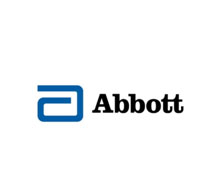
Abbott Molecular has acquired an exclusive licence to develop a diagnostic test in the United States based on several new biomarkers. It includes a broad range of specialised medicines; medical diagnostic instruments and tests; minimally invasive surgical devices, a spectrum of nutritional supplements for infants, children and adults, and products for veterinary care. Abbott Launches PediaSure SideKicks , a nutritional beverage to help balance out a picky eater’s uneven diet. It has a strong employee force of mre than 90,000.
This is not the time to fix problems, but instead to identify problems and opportunities. A small team of forward thinkers from across the Abbott organisation can drive this assessment, considering questions such as these:
What metrics do you currently have for performance in safety, quality, productivity, and cost?
→
What areas have the biggest gaps between where you are now and where you need to be?
→
What areas are important but don’t even have metrics?
→
Building Partnerships
Medtronics Lab looks to unlock the operational value across its healthcare enterprise.Healthcare providers can benefit from long-term strategic partnerships that can help them unravel the operational complexity, plan for risks and opportunities, and pave the way to sustainable and cost-effective operational excellence with continuous improvements.
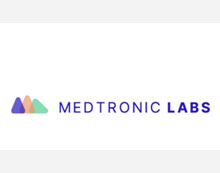
To combat the non-communicable disease crisis, Medtronic LABS collaborates with partners across the globe to create technology-powered healthcare solutions to expand patient access for disadvantaged communities. Patients are at the very centre of these solutions. LABS often works alongside local governments, faith-based organisations, and health systems to deliver a full spectrum of healthcare services to those who need it most.
ABBOT LABORATORIES | STRYKER |
PFIZER | MCKESSON |
MEDTRONIC | UNITED HEALTH |
_____________
Three ways a hospital business can increase efficiency
_____________
Three ways a hospital business can increase efficiency
Hospital Process Automation: Hospitals can use different approaches to boost efficiency in individual areas. Automation is one of the most common solutions. A hospital business has various menial and repetitive tasks that can eat up precious resources. Automation can free up time, money and effort, allowing you to relocate those resources to other critical sections. Initial automation costs might be high, but the improved efficiency more than makes up for it.
Hospital Business Process Improvement /Optimisation: Knowing when to introduce new hospital processes cannot be exaggerated enough. When you’d notice that some systems are not functioning optimally in the hospital, you might consider replacing them. However, switching processes in the middle of a project can be counterproductive. So, analyse situations carefully to find out how long-established systems should stay in place.
Task Management: Using various hospital tools can boost the hospital business efficiency of your organisation on several fronts. Hospital task management software helps employees share information and communicate smoothly, which is crucial when working to be more efficient. Hospital management platforms keep everyone on the same page and make changes easy to implement.
Use technology to automate manual hospital tasks. Technology is getting us closer to automated work life. Many software applications automate tasks that would otherwise be time-consuming and manual. One of our favourite ways should be to save time on a daily basis by automating manual tasks using software and apps. Whether you’re scheduling social media posts, drafting emails with templates or creating new segments in your email marketing platform with Zapier, there are some great apps that can help you save time on your daily work and hospital business life. Automate repetitive tasks and processes using process management software or checklists. Manage and schedule tasks in order of priority and assign to the best person to complete the task. Use these tools in creative ways so you can spend more time on your high-value work—and less time doing things manually.
_____________________________
Efficient Supply Chain in Consumer Products Industry
Success in the consumer products industry demands agile supply chain management To support dynamic industry shifts, the consumer goods supply chain is accelerating transformation, particularly around digitalization, increasing resilience and adapting operating models.
Consumer products companies are leading other sectors on prioritizing and collaborating for supply chain sustainability and resilience.
Across the manufacturing and distribution sector, top performers are not waiting for their customer base to ask them to create a more agile supply chain or to improve responsiveness.
Companies are monitoring the market, watching how buyer behaviors are changing and then making adjustments by investing in the capabilities for improved responsiveness – all in the aim of delighting their customers and outperforming the competition.
Some of the consumer products companies that have demonstrated deft action have set themselves apart and have continued to demonstrate operational excellence in four key areas: data and technology, inventories, omnichannel marketing and organisational resilience.
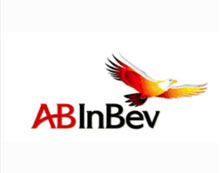
Improved inventory management
Improved inventory management unlocks organisational flexibility. In the first few weeks of the pandemic, inventories across the developed world were exceptionally erratic: consumption halted for products that until February 2020 were in high demand; demand surged for other items with low to moderate demand until such point. Caught flat-footed from a supply chain perspective, or operating a business model ill-fitted for a time of social distancing, a record number of manufacturers either filed for bankruptcy restructuring or went out of business altogether in 2020.
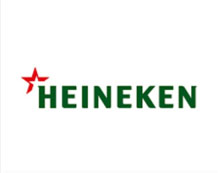
Irrespective of the scenario, inventory management and the related dependencies remain, some companies like Heineken are looking into novel ways of alleviating the carrying cost from higher inventory levels.
The Wall Street Journal reported an increase in inventory management firms that buy and hold inventory on behalf of their customers, changing the supply chain model from “just in time” to “just in case.” While this comes at a cost, for some, it may be far less than the penalty to the balance sheet, working capital and credit facilities necessary to run the business.
If you are willing to make drastic decisions, invest in the right technology and people, and re-evaluate your supply chain needs.
→
ANHEUSER-BUSCH | PROCTOR AND GAMBLE |
NESTLE SA | HEINEKEN |
UNILEVER | MARS |
_____________________________
Achieving Cost Efficiency in the Space Industry

Due to the special application conditions involved, products and services in the space industry are subject to the highest standards encountered in the industrial sector. At the same time, space missions are subject to ever-increasing investor scrutiny and more and more are expected to justify their purpose and the costs incurred.
For the companies involved this means taking a far closer look at the entire value-added chain from their own perspective – from product development all the way to manufacturing and quality assurance – including new business models.
Approaches which are already established in the aviation or automotive industry are finding their way into the space industry as well.
Optimizing development and design processes in terms of target costing (design-to-cost approach)
→
Effecting a comprehensive increase in efficiency under key words such as factory planning, production optimization, and comprehensive quality management
→
Optimizing output and quality by applying operational excellence management and optimized process management, as well as securing sustainable improvement (CIP)
→
Utilization of already existing data to achieve integrated process structures
→
And in general the utilization of the opportunities of digital transformation by individual companies
→
The requirement already placed on established suppliers – to offer attractive prices and sustainable products while maintaining consistent quality – is gaining in importance as this sector moves towards commercialization, private suppliers, and the accompanying shift in supply structures
On the practical side, advances in reusable rockets, lowered per-launch costs and miniaturisation of satellites are opening up business opportunities well beyond aerospace and defence, and into IT hardware and telecom.
SPACEX | ROSCOSMOS |
VIRGIN GALACTIC | ROCKET LAB |
BLUE ORIGIN | NASA |
_____________________________
Achieving Operational Efficiency in the Public Sector
Every country depends on an extensive administrative system to keep its economy and infrastructure in good order. Whether its government follows a parliamentary system under a constitutional monarchy – like England, or Canada – or a Federal system like the USA or any other country PSUs have a role in shaping the economy and business.
Efficiency and Leadership
A PSU may be mandated to perform a particular role, but its funding and relative power might still be dependent on its efficiency and leadership. As with the private sector, other forces might influence its existence, such as political relationships and priorities higher up, but generally, a well-functioning, fiscally healthy PSU stands a greater chance of thriving long-term.
It is essential to recognize that in both cases, public and private sector, the end customer is very similar. For a private company, the customer buys its products/services and has a more-or-less direct influence on its bottom line. For a public sector organization, there might not be any competition, but there is still the need for customer/citizen cooperation in everything from paying taxes on time to respecting the needs of the fire and police services as they do their jobs.
The PSUs, face a different set of challenges when pursuing standards of excellence or lean management as compared to those that would be seen in the private sector. One of these is a lack of a goal line.
A PSU should go through seven principles:
Strong strategies and long-term visions
→
Excellent and innovative leadership and management systems
→
A solid, yet flexible and agile administrative architecture reflecting political priorities
→
Creative communication to spread cultural change, transparency, and stakeholder involvement within and beyond the administration
→
Intelligent information and communication technology (ICT)-supported solutions
→
Sound performance control
→
Integrated financial management systems
→
Notion of Excellence
The truly high-performing public sector organisations are those that demonstrate a strong internal culture that includes clear values, ethics, and individualised respect. Many of the oil majors in global level working with this principles and initiatives.

The notion of excellence within the PSU must focus more on achieving tangible efficiencies within the constraints of a much bigger system, demonstrating and celebrating them regularly. A general improvement in communication education and the acknowledgment of a just and equitable work culture are required, supported by strong leadership.
Management excellence for the PSU contains the same elements and goals as the private sector. However, instead of maximizing profits, the goal is to maximize the efficient use of public funds in a way that genuinely benefits the employees and the public simultaneously.
ONGC | SAIL |
SAUDI ARAMCO | COAL INDIA |
SBI | BHEL |
_____________________________
Operational Excellence in TMT Industry Segments
We believe that businesses need to reinvent their operating models and grow their revenue streams. They need to become more efficient and develop broader, more holistic skill sets, while also integrating specialised knowledge and resources you may have never thought about before.
TMT companies that misjudge the influence of disruption that are putting their fortunes at stake. Being at the heart of the digital economy, TMT companies need to shield themselves from disruptions and navigate ever-changing markets to capture new opportunities, promote innovation, and create value. To meet the specific customer demands and production cycles, most companies need to adapt quickly. If you want to scale up your production capabilities you require additional capacity to take on new projects, and you have to go operational excellence.
Adopting a strategic, futuristic business model
Adopting a strategic, futuristic business model is crucial to the survival and success of your company. TMT companies can stay ahead of the fierce competition by offering unique customer experiences and best-in-class products.

Safeguarding data, reputation, and brand

Creating captivating customer and employee experiences

Strengthening growth agenda by augmenting your M&A pursuits
Retaining the talent and skills so it can offer world-class products, services, and solutions

VODAFONE | NETFLIX |
AT & T | MICROSOFT |
WALT DISNEY | APPLE |
_____________________________
How to Achieve Competitive Advantage in Semiconductor Industry in Global Level
Some of the semiconductor companies are – Taiwan Semiconductor Manufacturing Co. Ltd. ( TSM), Intel Corp. ( INTC), Qualcomm Inc. (QCOM), Broadcom Inc. ( AVGO), Micron Technology Inc. ( MU) NVIDIA Corp. ( NVDA), Applied Materials, Inc. ( AMAT) and ASE Technology Holding Co. Ltd. ( ASX). Tata Elxsi Ltd, ASM Technologies Ltd, Dixon Technologies (India) Ltd, SPEL Semiconductor Ltd, Moschip Technologies Ltd, Ruttonsha International Rectifier Ltd, HCL Technologies Ltd, and others are a few semiconductor stocks in India.
Competitive advantage in the semiconductor market
Nvidia designs and sells GPUs for gaming, cryptocurrency mining, and professional applications, as well as chip systems for use in vehicles, robotics, and other tools.

In the semiconductor market, there is a substantial benefit for not only the senior management to understand their competitive advantage but also the newest worker on the factory floor at a distance.
We must understand why and where our customers buy our semiconductor goods and services and why they don’t.
→
What creates a competitive advantage?
Strategy creates a vision that when executed creates a competitive advantage leading to sales.
→
Intel is best known for developing the microprocessors found in most of the world’s personal computers. The multinational technology company is also the world’s largest manufacturer by revenue of semiconductor chips, a product used in most of the world’s electronic devices.
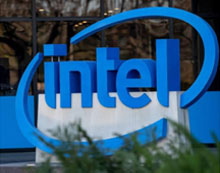
Executing a strategy, any strategy is risky. Even with the most disciplined execution, not all strategies are successful in creating a competitive advantage, in fact, some strategies result in a competitive
disadvantage despite the best efforts of that company’s strategists.
So while strategy creates a competitive advantage, what maintains that advantage? Assume that the strategy is to offer the lowest cost option. Further, assume that this strategy was effective in earning the company 45% of the market share and making them the market leader. If the company does nothing to strengthen this competitive advantage, what will happen over time? You know, the competitive advantage will erode and then vanish.
In a competitive marketplace, there is no standing still. You are either growing or shrinking.
→
Semiconductor company TSMC designs and manufactures microchips used in electronics and other industries, including healthcare and communications. Taiwan Semiconductor Manufacturing Company is a Taiwan-based semiconductor company. The company makes its money by selling chips to clients all over the world.
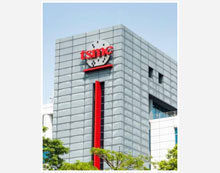
When a company’s market share is threatened, what typically happens? We rely on strategy to create a new competitive advantage.
After we execute the strategy, we create a new competitive advantage,
which then erodes over time and we continue the cycle of implementing a new strategy when that new competitive advantage erodes due to competition. Strategic shifts come with an associated risk of being unsuccessful.
Therefore, it would be wise to minimise the number of strategic shifts that are required to create a new competitive advantage because of an eroding existing one.
→
Specifically, operational excellence in the semiconductor field is the incremental increase in a competitive advantage unrelated to a shift in strategy. This definition serves to focus our efforts to continuously improve and operate excellently on variables that are related to our competitive live in a world of limited resources. However, our resources of time, money, and people are constrained so we must be thoughtful and deliberate on how to invest these resources in semiconductor manufacturing in Japan or elsewhere.
INTEL | QUALCOMM |
NVIDIA | BROADCOM |
MICRON | TSMC |
_____________________________
Our consulting on business efficiency is managed by a dedicated team from Japan.
_____________________________
Efficient companies make the most of their resources, transforming labour, materials and capital into products and services that create profit for the company.
The automotive industry in Japan is one of the most prominent and largest industries in the world. Japan has been in the top three of the countries with most cars manufactured since the 1960s, surpassing Germany.
Besides the Kantō region, the Kansai region is one of the leading industrial clusters and manufacturing centres for the Japanese economy. Japan is the world’s largest creditor nation.
Japan’s major export industries include automobiles, consumer electronics, computers, semiconductors, copper, and iron and steel. Additional key industries in Japan’s economy are petrochemicals, pharmaceuticals, bioindustry, shipbuilding, aerospace, textiles, and processed foods.
Main industries of Japan are motor vehicles, electronics machine tools, steel, nonferrous metals, ships, chemicals, textiles, and processed foods.
_____________________________
When you think of developing your industry’s business efficiency in a Japanese way, you can contact us to leverage our MCGR consulting team from Japan. |

HOSPITAL AND HEALTHCARE INDUSTRY |
CONSUMER PRODUCTS INDUSTRY |
SPACE INDUSTRY |
PUBLIC SECTOR INDUSTRY |
TMT INDUSTRY |
SEMICONDUCTOR INDUSTRY |
AUTOMOBILES INDUSTRY |
CONSUMER ELECTRONICS INDUSTRY |
COMPUTER INDUSTRY |
COPPER INDUSTRY |
IRON AND STEEL INDUSTRY |
PETROCHEMICAL INDUSTRY |
PHARMACEUTICALS INDUSTRY |
BIOINDUSTRY |
CHEMICAL INDUSTRY |
SHIPBUILDING INDUSTRY |
AEROSPACE INDUSTRY |
TEXTILES INDUSTRY |
PROCESSED FOOD INDUSTRY |
_____________________________
PRACTICE LEADERS BUSINESS EFFICIENCY

MAKI KOMURO
and Partner
TOKYO
Hospital and Healthcare
Public Sector
Semiconductor

YUZI SHIRAKAWA
and Partner
NAGOYA
Pharmaceuticals
Bioindustry
Chemical

SHIGERU KOBAYASHI
and Partner
SAPPORO
Iron and Steel
Petrochemicals
Consumer Products

TETSURO WATANABE
and Partner
OSAKA
Consumer Electronics
Automobiles
Computer

NOGUCHI KOKI
and Partner
KOBE
Textiles
Shipbuilding
Aerospace and Space Industry